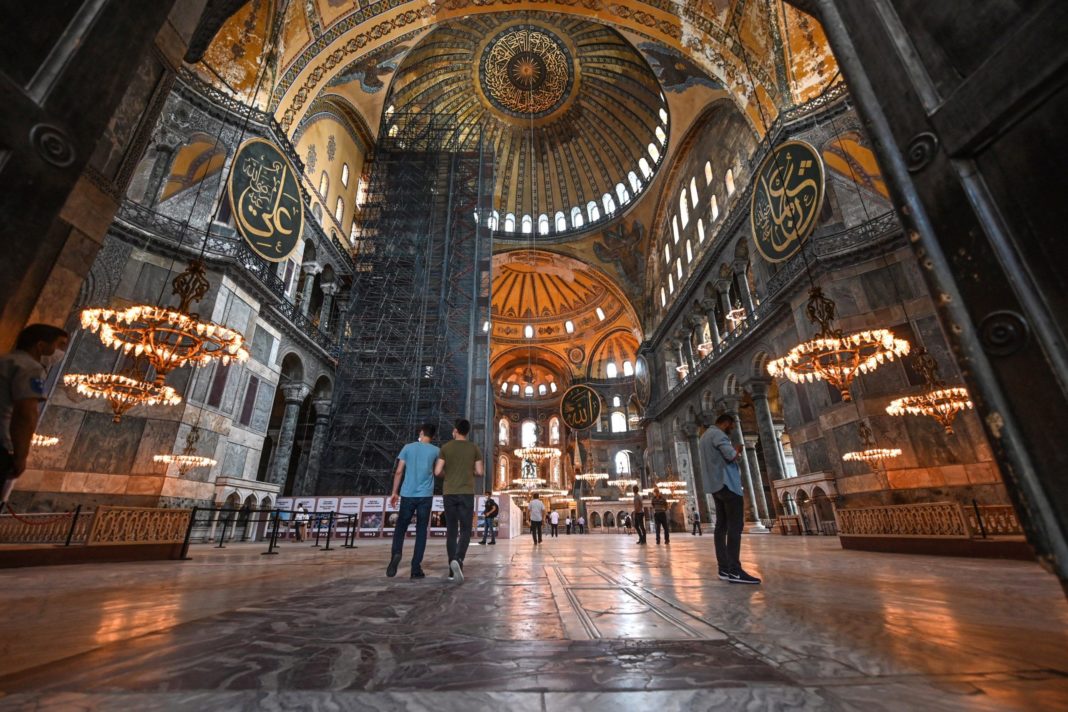« Images circulating online appear to show cracked and damaged floors caused by heavy cleaning machinery used at the historic structure » says Sarah Rose Sharp in Hyperallergic.
Touted as the world’s oldest and fastest-constructed cathedral, the Hagia Sophia in Istanbul has weathered many transitions — between reconstructions and reallocation as a Muslim house of worship, the extraordinary structure has seen a lot of change. As historic Constantinople became modern-day Istanbul, rulers from emperors to sultans employed it first as a cathedral, then a mosque, and eventually, in 1934, it was converted by a Cabinet decree to a “Memorial Museum.” In 1985, Hagia Sophia was declared part of a UNESCO World Heritage Site and served as a landmark tourist destination up until 2020, when a Turkish court reversed the decree reinstated its use as a mosque after 85 years as a museum. The decision was controversial.
Now, images circulating online apparently showing cracked and damaged floors at the Hagia Sophia have reignited international fervor over the preservation of the historic structure.
Hagia Sophia was built and rebuilt several times before. By order of Emperor Justinian, it was completely and grandly reconstructed between 532 and 537 CE, opening for Greek Orthodox worship that year. In order to represent the Byzantine Empire within the extravagant basilica, the emperor required all provinces under his rule to provide materials for use in its construction. The marble used for the floor and ceiling was produced in Anatolia (present-day Eastern Turkey) and Syria.
Now that ancient marble is showing signs of wear, some news reports claim. According to the Greek Reporter, the damage to the floor is being caused by the heavy machines used to clean it.
Because the Hagia Sophia was considered a seat of Greek Orthodoxy, damage resulting from its use as a mosque is especially contentious — but many others with no religious stakes in the building are concerned about irreparable damage to an important cultural site. Earlier this year, a Twitter post from a group called the Turkish Association of Art Historians shared a photo of what appeared to be vandalism to the historic Imperial Gate of Hagia Sophia, with brutal gouges in the wooden door that is, by legend, built from pieces of Noah’s Ark.
“This historical building is greatly damaged,” a mosque tour guide told the Turkish daily newspaper Cumhuriyet. “When Hagia Sophia was a museum, people visited it with great respect. It’s like a fairground now.”
Hyperallergic, July 8, 2022, Sarah Rose Sharp, Photo/Ozan Kose/AFP

